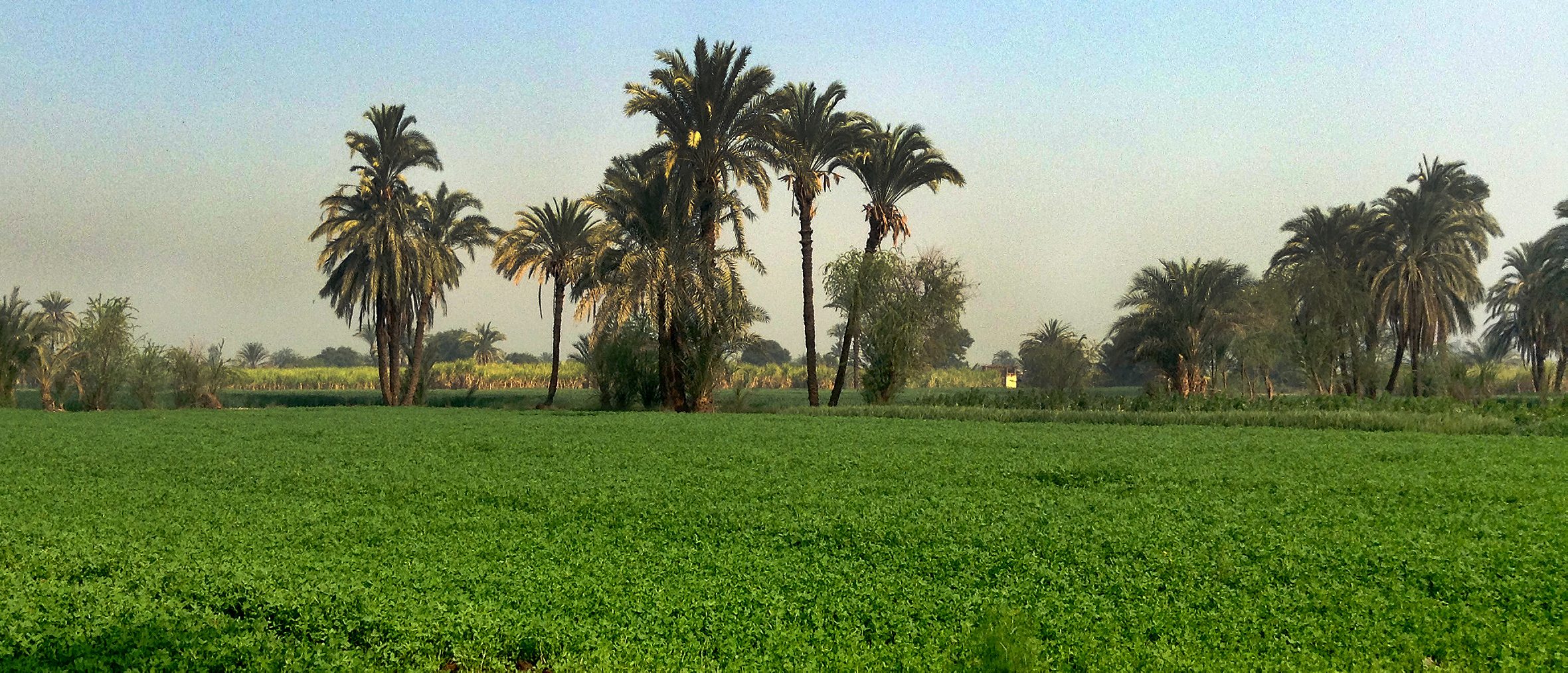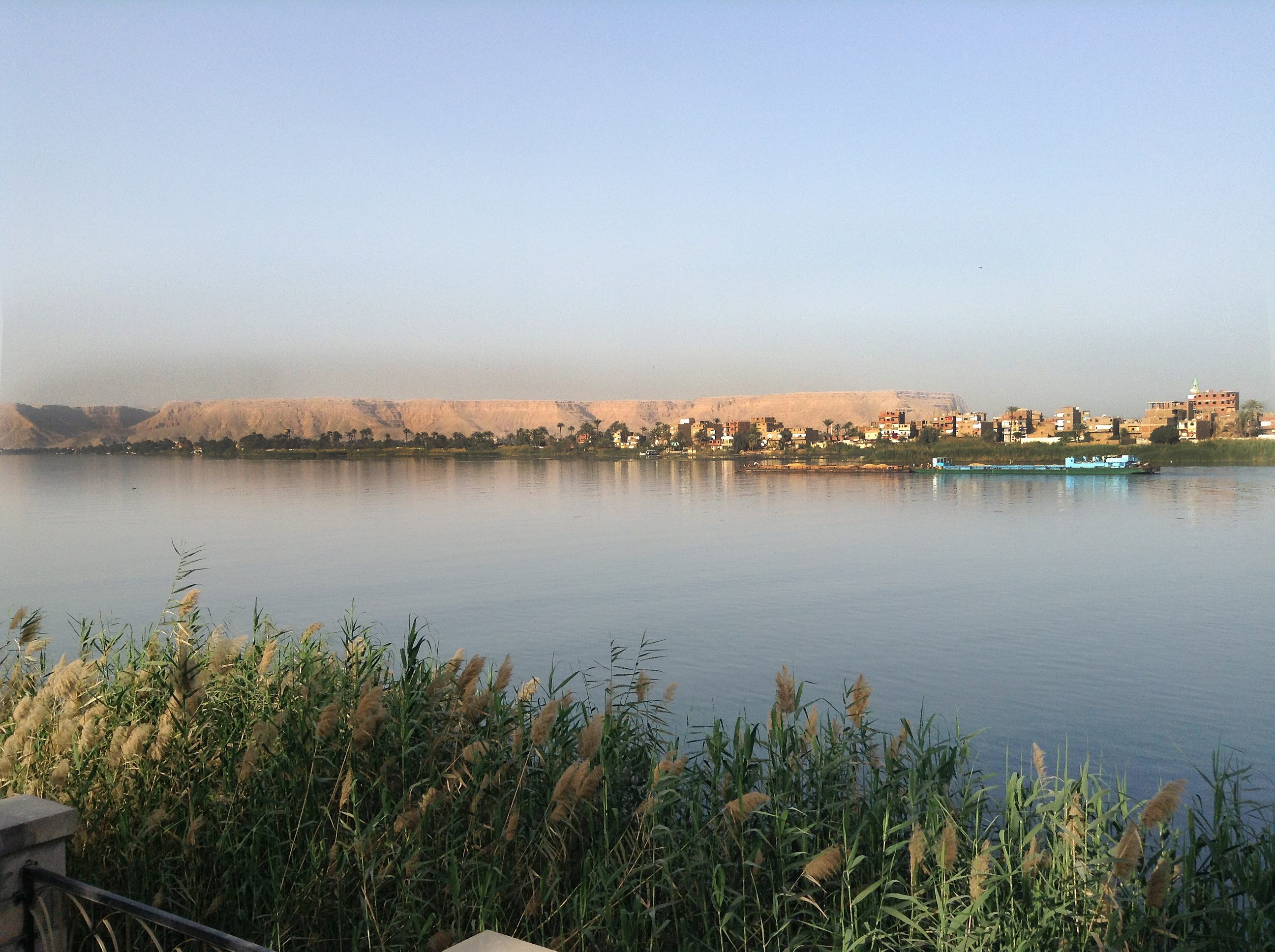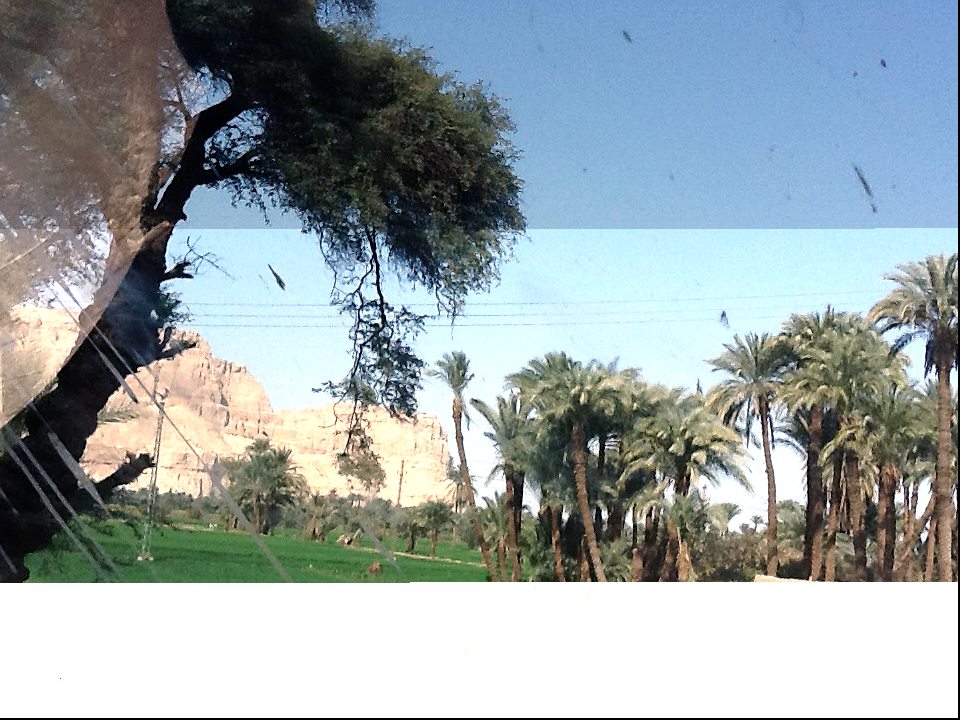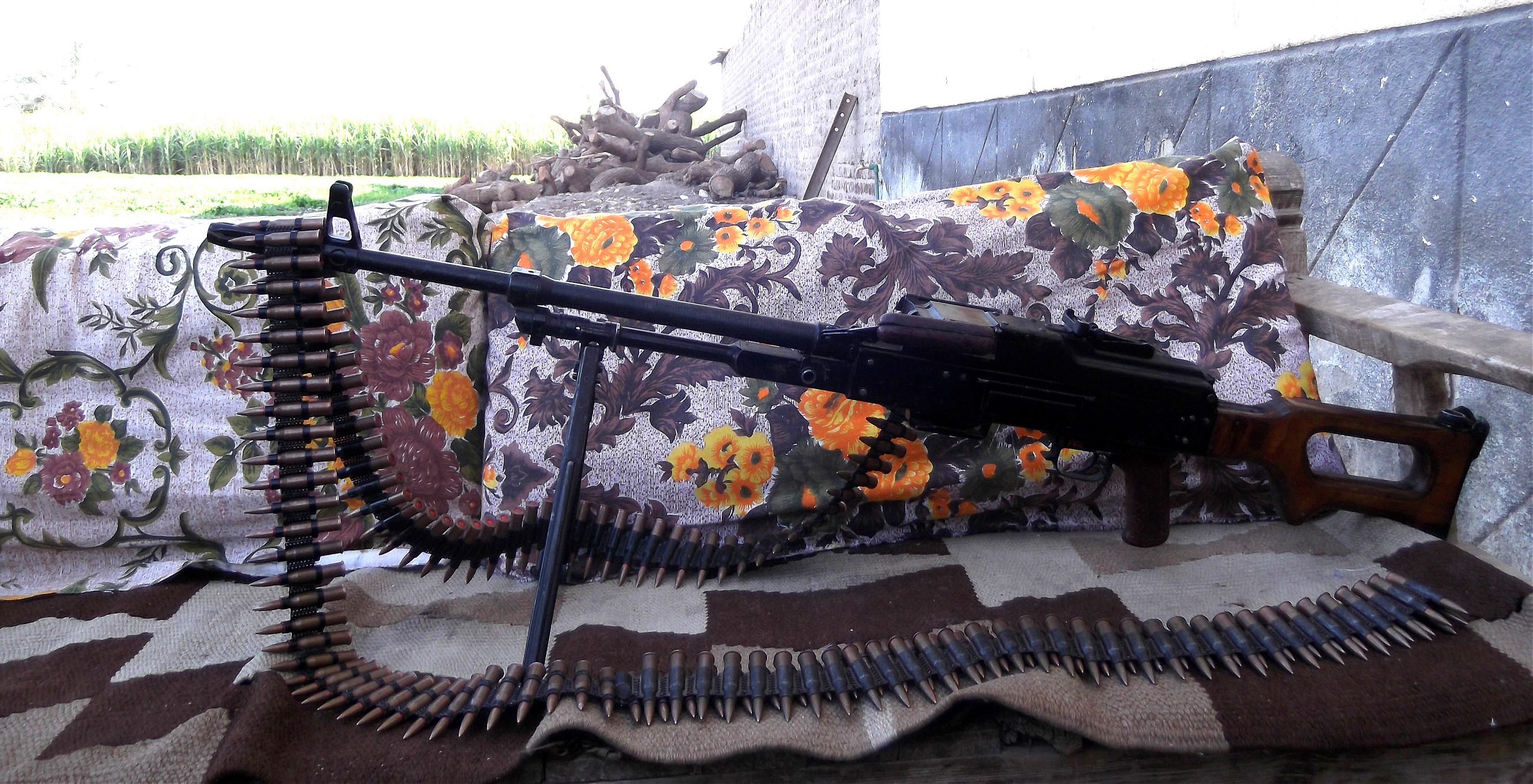Yassin Gaber investigates reports of rampant arms trading in rural Upper Egypt.
We are hurtling along a dusty track in a Peugeot 504 Estate, and somewhere in the car, there is a gun. ‘Of course I keep a gun in my car,’ I mouth anxiously, repeating the guide’s words. I fumble with my Dictaphone, as my eyes scan the floor of the haggard and wheezing automobile, searching for the concealed weapon. I can’t see Bassem’s face. He is sitting next to our guide and driver. But I sense his trepidation. Our fraught excitement.
Somewhere ahead lies one of the most notorious villages in the Sa’id, Egypt’s south. The village, Hamradoum, is regarded as a focal point in the Sa’id’s trafficking of arms and drugs. Locals refer to it and surrounding villages as the ‘circle of blood and fire.’
Hamradoum. There is something chilling even about the name. In Arabic, it sounds a bit like “red blood.”
Bassem, a fellow journalist, had the local connections, and a spare bed to boot. On the journey from Cairo, he had filled me in on the local dos and don’ts. The trick it seemed was never to refuse any offer of hospitality—cigarettes being the supreme gesture of goodwill.
I take a puff of the harsh Cleopatra cigarette thrust at me by our guide and reflected on my decision to venture into the Sa’id in search of arms dealers.

I had first been drawn southward from Cairo by a tucked-away newspaper article about feuding families and bloodbaths in the Sa’id. These were distant gunfights that were physically and politically worlds away from the recent uprising. With the rest of Egypt distracted by crisis after crisis, this part of the country is making headlines of its own, about rising militancy, the attending threat of armed conflict and the proliferations of weapons.
Exhaling smoke as feebly as the car’s tailpipe, I thought of my conversation the day before with Abdallah, a taxi driver who moonlights as an arms mule. He had refused to escort us into the village, taking pains to dissuade us from even trying.
But this young guide–known by locals as the “omda” or mayor–had guaranteed a warm reception. I wasn’t to worry. A major criminal family was looking out for us: his.
Family honour codes are in play. That outmoded social network, that bloody arbitration of yesteryear.

The car slouches towards this lawless country. Looking out the car window, I catch sight of a man passing on his motorbike with a turn-of-the-century Mauser semi-automatic slung round his back. Outlaw, overeager civvy or lawman? I settle with civvy. His gun doesn’t seem particularly trendy, unless there is a market for antique pieces. The clip appeared to be fastened to the barrel with surgical tape. Definitely not worth smuggling, I think.
The omda’s concealed gun isn’t bothering me anymore; he seems affable enough, preoccupied as he is with his approaching wedding. Before leaving the town, we had stopped to pick up his dry cleaning for the wedding, along with a strange, hybrid chandelier–part stereo, part disco ball.
The landscape continues to break in front of us, revealing stratified layers of green fields, sandy ridges and the Nile’s teal blue waters. It is breathtakingly beautiful.
I wonder where this drive will lead us.

The village soon comes into view. Surrounded by sandy escarpments on one side and lush green fields of sugar cane on the other, Hamradoum seems devoid of any police presence save a sparsely manned checkpoint on its border.
“We first saw arms in 1941. Shotguns… Because of a dispute. A big, big one, you know… Between two of the three families, Hindawy and Suleiman. Five people were killed.”
The omda keeps narrating: “The conflict got bigger and bigger until 1979, when six people died. It was then we first saw the Mauser rifle.”
Are they still settling disputes with Ottoman-era rifles?
The man on the motorbike comes to mind. Are they still settling disputes with Ottoman-era rifles?
Family disputes and blood feuds had triggered the community’s demand for guns. Gun ownership became commonplace. Arms traders found themselves a market.
The night before, we had sat down in nearby Nagaa Hammadi with the patriarch of the Abdel-Aal family—one of the larger families in northern Qena province. He wore his trimmed moustache haughtily.
“What do you want with them? They are godless people,” he had said, invoking the usual stereotypes about nearby Hamradoum. “Fathers are willing to kill sons for profit.”
Enlightened, we then crossed town to meet with a former Mubarak-era lawmaker, Fathi Qandil, at his guesthouse. He lounged outside beneath an old campaign billboard with a gigantic image of his face glaring outward. The billboard proclaimed him ‘the representative of the poor.’
The burly, moustachioed ex-politician sat before us in a traditional galabiya, smoking a shisha. Windows swung warily by their rusting hinges and pockets of sky pierced the thatch above our heads. Qandil’s fawning entourage of five men lingered at a distance. His stony demeanour and hoarse voice mingled with these surroundings to give the unmistakable impression that this was a house unaffected by the recent uprising or change of any kind.
“Hamradoum provides arms to the entire country,” he had said, taking a long drag on his pipe. “After the revolution, everyone here is an arms dealer.”
He spoke in hyperbolic terms about the proliferation of weapons—claiming arms had increased tenfold in Egypt since Libya’s revolution. All the more reason, he said, for a strong and iron-fisted security apparatus and even a return to emergency law.
I found his claims hard to believe. Cudgels and canes were two a penny around here. Even rifles and handguns didn’t seem terribly uncommon. Nothing showy, just local accoutrements. But no weapons bazaar.
Hamradoum is very much the ghost town, with grazing donkeys and occasional armed men on motorbikes
The Peugeot 504 pulls away from the village and draws closer to the escarpments, where beneath the rising slopes, surrounded by green sugar cane fields, a small concrete villa rests.
It stands out out, primarily because it is fully constructed and uniformly painted.
Hamradoum’s minimal infrastructure–the absence of paved roads and the prevalence of shanties–coupled with a scarcely visible populace lends the place a shadowy character. It is very much the ghost town, peppered with vacant huts, grazing donkeys and the occasional traffic of armed men on motorbikes.

Five hoary old men stand up to greet us as we pull up to the house. Next to them, a machine gun rests against the outer wall.
“Is that one of the Russian guns?” I enquire.
“No, it’s a ‘resistance’,” one of the greybeards barks back.
His forceful response and his seat, elevated and away from the others and next to the largest gun, marks him out as the elder. He is the omda’s father.
The ‘resistance’, a Soviet Goryunov, comes through the Sudanese border and currently sells for about LE33,000 ($4,740) in Egypt, the omda later informed me. It was dubbed ‘resistance’ by Port Said locals who took up arms during the 1956 Suez War.
Seated comfortably between a box of ammunition and a bandaged Kalashnikov rifle, I take a deeper drag of my cigarette as the omda tells us about the ‘security vacuum.’ The overthrow of Mubarak and the collapse of the Libyan regime has made it easier to smuggle weapons from Libya through regular roads between the coastal province of Matrouh and Qena, he says. Smugglers even use public buses to cross over from Libya.
But the guns that the omda and his family display are mostly relics of Egypt’s Cold War closeness with the Soviets. More museum pieces than instruments of chaos.
The only weapon we are shown that is not Soviet manufactured is a Belgian FN FAL rifle that I’m told initially sold for LE26,000 ($3,735) when it crossed over from Libya. The story is a little suspect, though, because FN FAL is also tied to the Suez War and the 1967 Six Day War, when it was the standard Israeli rifle, and could easily date back to then.
But the heavier weapons the omda’s father tells me, make their way directly to Matrouh, which borders Libya. There they are stored, destined for the Sinai Peninsula and Gaza.
‘My wedding will have plenty of guns,’ the omda says
The elder is reticent to speak in detail about the drugs and weapons that pass in and out of the peninsula. They have little to do with that trade, he insists. Their arsenal is only for protection.
The omda pulls out his iPad, eager to show us a YouTube video of a wedding in Matrouh. The small speakers struggle with the symphony of gun shots. The final movement sees the camera jerk towards a man firing a belt-fed machine gun.
“My wedding will have plenty of guns,” the omda says energetically. “We won’t fire them of course.”
“Of course,” retorts Bassem.
“Real men,” says the omda, “carry guns but don’t fire them needlessly.”
As we chat, a young boy drives up on a motorbike with a Belgian FN FAL slung round his shoulders.
I drink in the sight of the child walking towards me carrying a rifle formerly wielded by Israeli troops. The elder claims the boy had just come back from taking an exam in the local school, which was built in the mid 90’s. Teachers, terrified of the village, rarely turn up, he says.
“I will tell you something honestly,” the elder says, seizing my attention with his guttural Sa’idi accent and his firm, unwavering gaze. The Sa’idi pronunciation of the hard and soft G lends the accent a Bedouin-like timbre. “The government doesn’t want to help us. To them, we’re just a bad bunch who jump at the chance to kill each other.”
This is met with nods and approving growls all round. The elder continues: “Even during the ugliest of showdowns, gun battles can carry on for up to 40 days before the government decides to get involved.”
I had noticed, as we entered the village, that the police checkpoint was unmanned. Even in Nagaa Hammadi, the nearby urban centre, there was no sign of the police.
“They’re all liars,” the omda’s father remarks, continuing his rant against the security apparatus. “They’re a spineless bunch.”
His voice ratchets up: “I swear these troops are neither able nor qualified to capture a chicken from our village.
“What crackdowns? They come into our village and find that most of the convicts and criminals have fled to the green mountain,” the elder sneers, “Only the old men stay behind… prey for the men in black and their lackeys in camouflage. These policemen you’re talking about help the criminals, you see. For hash and opium.”
His weathered features shift into a grin: “I’ve never seen them arrest a single criminal.”
But who were these ‘criminals’? I think to myself. I glance at the cremated remains of a dozen cigarettes and the boxes of ammunition. For all I know, I am sitting with them.
These ‘criminals’ seem to exist in the abstract. Perhaps my hosts are just country bumpkins, and I had been swept up by all the urban myths.
They have put their small arsenal on parade for us visiting journalists and even offered to photograph us (not them) holding their guns. But they speak in the same riddles, the same ambivalent language used by those enigmatic government ‘officials’ and by our new friends, the moustachioed apparatchiks in Nagaa Hammadi. The real criminals, the real arms traders, are always in the next town over, it seems. I am relieved when the omda stands up to drive us into town. We stop for fish along the way.
The next day, Bassem and I decide to seek out the notably absent police
Before we left, the village elder had told us to set the record straight: “We’re good people. You and your colleague entered our village. You sat with us. Did we attack you? Did we shoot you?”
The next day, Bassem and I decide to seek out the notably absent police. A visit to Qena’s security directorate is in order. We squeeze into a microbus and travel eastwards towards the capital. At the directorate’s gates, we are met by two sagging, plain-clothed individuals with no obvious connection to the police headquarters. After a brief examination of our IDs, the two policemen let us loose inside the gates.
We wander around the sleepy corridors until we find our man, who rings his man, who soon forgets us. Eventually we find ourselves drinking coffee, waiting to speak to the province’s security chief. We eventually fall in with a high-ranking security official, who decides to humour us.
“They’re both dirtier than the other,” he exclaims, as he examines us, no doubt wondering what we are doing so far from home. The official, who sees no point in giving us his name, was referring to the inhabitants of Hamradroum and neighbouring Abu-Hizam.
“We just leave them inside to kill each other off.”
No love lost between the police and our country friends, I think to myself.
“These people shoot at the flesh,” he declares, with the inflection of a hounded victim, “We’re not willing to martyr ourselves for them… we steer clear of these villages.”
“Better to let the criminals come out… Then we take our aim.”
We are eventually told to return the following night, when comprehensive documentation of security crackdowns would be ready.
The next night we again cram into a microbus to make the desert journey. Lurching forwards then backwards, the bus makes its way to the desert road. The metal coils of the seat grind against me.
We greet the same sagging guards at the gate and proceed with intent. No one is expecting us. Instead we are led about from one dimly lit office to the next. Low-ranking policeman either linger, regarding us curiously, or run back and forth with cups of tea for their superiors, who sit in their garishly furnished offices watching the latest chat shows and mouthing affirmatives to fellow ‘beks’ and ‘pashas’, showy Ottoman-era titles that they use on each other.
Several hours later, we walk out of the directorate with a list of seized arms
After a few cups of tea and plenty of awkward exchanges, relaying our story ad nauseum, my colleague Bassem is called into the security director’s office. His official accreditation trumps my inquisitive expression.
Several hours later, we walk out of the directorate’s doors with a sheet of A4. On it, in a few scrawled lines, is a list of seized arms. They also decided to throw in a list of seized drugs for good measure. But they had neglected to specify when, where or how the weapons and drugs were collected.
The document had been put together, in pen, in front of us by two officers who had batted around dates and numbers, apparently attempting to recall the various operations from their memories. They managed to attain a remarkable degree of specificity.
According to the paper, security forces—over roughly the previous eight months—seized one Goryunov machine gun, 114 automatic rifles, five semi-automatic rifles, 20 pistols, 11 shotguns, 123 homemade pistols and 4,797 bullets.
We were unsuccessful in soliciting any comments from the beks and pashas regarding smuggling routes from Sudan or Libya into Egypt or the claims, which locals bandied about, of local police collusion with arms traffickers.
Our man Abdallah, the cabbie-turned-arms mule, had mentioned these supposed ties, fidgeting nervously in his seat as he had told us:
“Of course the government doesn’t want to completely crackdown on arms traders. They’ve got common interests,” he had told me, as he fiddled with a lump of hash.
“I’ve got no doubt there are informers within the major families… Even at the top.”
Another myth perhaps. There is certainly no trust here, I think. Not between the different actors and not with two interlopers from the City.
The police and political bosses regard the villagers with callous indifference, happy to write them off as crooked and savage. With little more than impassioned rhetoric, it is the easy narrative. But there is something more unusual, more real about the villagers.
A man in a karakul hat—a favourite with Soviet party leaders and Bond villains—strides up to our table
Before boarding the train to Cairo, we sit down for a last coffee with the omda and his pals.
A man in a karakul hat—a favourite with Soviet party leaders and Bond villains—strides up to our table and sits next to the omda. He regards us with a rather unctuous smile, revealing his coffee and nicotine stained teeth.
Before he arrived, we had been talking about government negligence. He interjects and offers us a curious anecdote. We are, it seems, in the company of a kidnapper.
He is a kidnapper armed with what he and the omda’s pals think is unassailable logic. That is, that without loans from agricultural banks–who refuse them on ‘security grounds’–he and other farmers are left without a steady income. Kidnapping, being a very lucrative trade, allows him and others like him to purchase property and build.
“Some ask why we target Christians and not Muslims,” he says with a smirk, looking at my colleague and me. “Because our (Muslim) men are not worth as much.” He turns to one of the omda’s friends, a Christian who is seated at the table. “It’s nothing personal.”
The Christian man sniggers. I turn uneasily in my seat and think of the 13-hour railway journey to Cairo.
The guns are old. The dynamics are older
It has all been quite uneasy. But mostly curious. I have met all the notable members of this bizarre bunch: the outlaw, the political boss and the lawman. Between them I’ve read decades of old grudges, hostilities and now cold concern.
The omda and the village elders are mostly concerned with their world and their conflicts. The sanctity of the family, they say, trump all the factions that are fighting for power in Cairo. Here there is a different power dynamic and a different set of hostilities.
Cairo’s press may be looking southwards and seeing the arrival of waves of weapons from across the border, but in Hamradoum and Qena, it looks like business as usual. The guns are old, the dynamics older.
The characters we have spoken to, though not particularly forthcoming, are happy to talk in hyperbolic terms over coffee. But there is never any urgency in their words. But even that could be an affectation. I leave for the train thinking that, despite everything, perhaps that bazaar, the one that houses the growing weapons market, is indeed just one more town over.